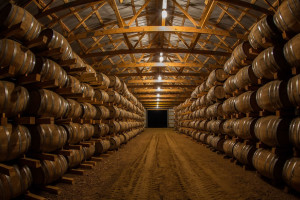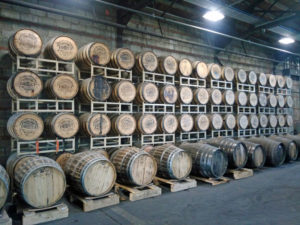By Richard Thomas
The Treasury Department’s Alcohol and Tobacco Tax and Trade Bureau, or TTB for short, is the agency responsible for regulating what appears on the labels of alcoholic beverages in America. If an enthusiast is familiar with the agency, that knowledge likely comes from a time when blogs and bourbon forums were rife with discontent over inconsistently applied labeling regulations that allowed certain bottlers to bend or skirt requirements that their labels clearly state where their whiskey was distilled.
That fever broke more than four years ago, however, and complaints that TTB can’t seem to do even the simplest things right faded shortly thereafter. In late November, however, the TTB proposed new regulations that instantly stirred up firm and fiery protest from across the country. If you care about what small distillers do, even to the slightest degree, you should sit up and take notice. It’s no exaggeration to say that if the new regulations go ahead as currently stated, craft whiskey as we know it could be devastated.
Long Overdue Reform
The 132 page TTB proposal represents a sweeping regulatory overhaul that has been on the agency’s agenda since 2013, and the first of its kind since the end of Prohibition. Note that nothing in TTB regulations, either as they currently exist or in the proposal, changes Federal laws regarding liquor. Also, these regulations have yet to take effect; they are in a period for public commentary, which ends on March 26, 2019, at which time the TTB will review said commentary and revise their proposal as they think necessary.
In regards to whiskey, much of what is in the proposal clarifies old regulations or existing law in a way that guarantees better application of standards or reflects changes in the industry. For example, the proposed guidelines clarify and strengthen requirements that a label must clearly state where a whiskey was distilled and aged, as well as that bourbon cannot have any additives beyond the water used to cut it. They would mandate that if a whiskey qualifies as a “straight whiskey,” it must be labeled as such (some distillers prefer not to use the term even if they qualify, because it would require them to state the age).
Other issues dealt with are more esoteric. Both “whisky” and “whiskey” may now officially be used on labels; what grain actually is has been formally defined; Tennessee Whiskey is formally mentioned, but not defined, so the Tennessee Whiskey Law of 2013 remains paramount by default; time spent in secondary maturation (“finishing”) doesn’t count toward an age statement; and what can be labeled a “cask strength” or “barrel proof” bottling is formally, if confusingly, defined.
Also defined is “white whiskey.” Previously, there technically was no such thing as “unaged whiskey,” because to be called whiskey meant at least a pure symbolic period spent in a barrel. Most white whiskeys were put into barrels for a brief time, perhaps less than a minute, to meet with this requirement. Now they won’t. Craft whiskey has been moving increasingly away from unaged spirits, but for some legal moonshiners and those producers who have built successful white whiskey brands, this is new regulation cuts out a costly and superfluous step in their production process.
No More Small Barrels?
Yet one proposal stands out as especially hostile to small whiskey producers. The new TTB regulations put a definition on what a “barrel” is, making it a vessel holding “approximately 50 gallons.” The American Standard Barrel (ASB) is a 53-gallon container, and is clearly what this regulation has in mind.

The Garrison Brothers barrel barn, with barrels ranging from the tiny to 59 gallons.
(Credit: Garrison Brothers)
Only a handful small and even medium-sized distillers rely exclusively on 53-gallon ASBs for aging their whiskeys. Other barrels in use range in size from tiny 3-gallon barrels to 59- and 60-gallon barrels acquired from wine coopers. Although tiny barrels were the norm in the craft sector a decade ago, today it is more common to see 15- to 30-gallon barrels in use, and many craft distillers age their whiskeys in barrels of a range of sizes.
One wonders if anyone at TTB has considered the ramifications of their new regulations, because meeting this requirement will never be a simple matter of transitioning to ASBs for most of those effected. If the new regulations were applied inflexibly, as proposed and without a grace period, many small distillers would find most or all of their existing inventory of aging whiskey invalidated with the stroke of a pen. These distillers could be put out of business by their losses.
Even with a grace period, some will find their balance sheet simply doesn’t support the investment of putting all their production into ASBs for four to six years minimum, even at a time when craft sector Bottled in Bond whiskeys are becoming more common. Even if a distiller can afford to make that transition to a bigger barrel format and longer aging times as standard, making a transition to ASBs only is not as simple as just doing it. If a distiller is using a smaller barrel size or a mix of barrel sizes, they have tuned their production process to fit that barrel stock, so changing entirely to ASBs would consequently change their flavor profiles and identity. It’s not an exaggeration to say that this regulation as presently written could crush craft whiskey as we know it.
Another wrinkle is that the new regulation may also eliminate finishing, or secondary maturation, as we know it. Although I think it doubtful that this is intended by the TTB, given their clarifications regarding finishing elsewhere in the proposal, strictly defining a barrel as an ASB could be read as barring the use of anything other than an ASB for primary and secondary maturation. That would discount the Port pipes and Sherry butts often used for this purpose, as they are much larger than an ASB. That scenario would put the kibosh on companies like Angel’s Envy and shut down a slew of experimental and regular releases from big distillers.
The good news is that this is merely a proposal (for now), and a proposal for TTB’s first major regulatory reform since the regulations were originally written in the mid-1930s. I doubt they expect to promulgate them as is. This guide from the Center For Effective Government covers how to comment on the proposed changes as a member of the public. You may also call your Member of Congress and/or your Senators and inform them of what you think of the rules changes on behalf of your local craft distillers.
 The Whiskey Reviewer A World of Whiskey, Poured Every Weekday
The Whiskey Reviewer A World of Whiskey, Poured Every Weekday



The proposed new regulations would appear to require a whiskey to be labelled bourbon if it meets all the requirements of that spirit type. That would seem to jeopardize the unofficial “Tennessee Whiskey” category since those spirits appear to meet all the requirements of bourbon whiskey. I have not read through all the proposed regs myself and I am strictly going on descriptions of some of the proposals which I have read.
There are some conflicting points. I think it goes without saying the TTB is not going to force Jack Daniel’s, the single largest brand in American Whiskey, to change to bourbon for any reason whatsoever. It’s definitely a non-issue insofar as Tennessee Whiskey is concerned.